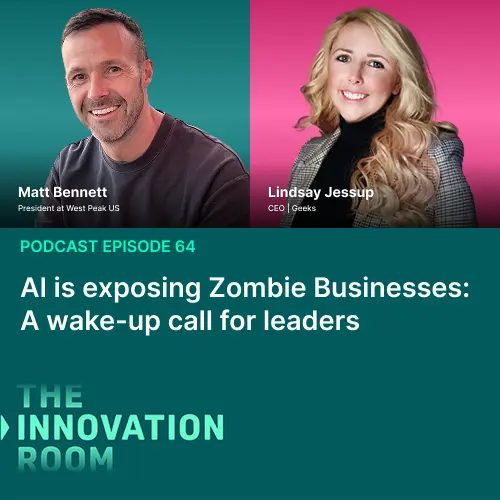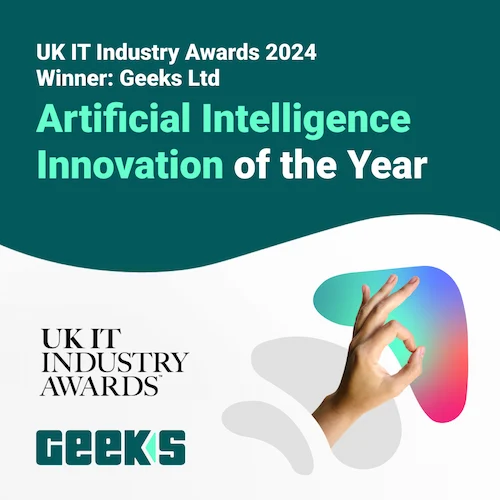
AI agents explained: Core traits, first steps and how they’ll shape work
AI agents are autonomous digital systems that can perceive data, reason about it, act independently, and learn from outcomes. Unlike chatbots or RPA, which follow static scripts or repetitive rules, AI agents adapt to context and orchestrate complex workflows without constant human input.
Their adoption is accelerating across industries. In finance, agents reconcile thousands of transactions in real time; in healthcare, they triage patients and support clinicians; in manufacturing, they drive predictive maintenance that reduces downtime and costs. The World Economic Forum predicts that by 2028, 33% of enterprise software applications will include AI agents, enabling 15% of work decisions to become autonomous.
The business case is clear: organisations that deploy agents see faster decision-making, higher efficiency, and scalable outcomes. To understand how they achieve this, it’s important to first look at the core traits that define every AI agent.
What are the four core characteristics of an AI agent?
AI agents are defined by four core traits that enable them to function beyond traditional automation: autonomy, perception, reasoning, and action.
-
Autonomy allows agents to operate without constant human oversight, making independent decisions within defined parameters.
-
Perception enables them to interpret structured and unstructured data from multiple sources, whether that’s sensors, documents, or real-time systems.
-
Reasoning gives agents the ability to analyse inputs, weigh options, and choose the most effective course of action.
-
Action is the execution layer, where decisions are translated into tasks such as sending alerts, updating records, or triggering workflows.
Together, these traits make agents adaptive and context-aware. For example, in supply chain management, an AI agent can monitor inventory levels, detect when stock is running low, reason about supplier lead times, and automatically trigger an order, all without human intervention. This shift from rule-based execution to continuous adaptation is what makes AI agents a transformative step in enterprise systems.
What should be the first step when building an AI agent?
The first step in building an AI agent is not choosing a model or coding an algorithm, it is defining the business problem and use case. An AI agent delivers value only when it solves a measurable pain point, such as reducing manual reconciliation, improving customer response times, or optimising supply chain decisions. Starting with the problem ensures that the agent is aligned to outcomes rather than becoming a technology experiment.
At Geeks, we use frameworks like DiGence® Pulse and the AI Adoption Wheel to scope this foundation. These tools help organisations assess their current systems, uncover gaps, and align AI initiatives with strategic goals. By mapping processes and engaging stakeholders early, businesses can ensure that AI agents are designed to fit real-world challenges.
Once the use case is clear, the focus shifts to data readiness, success metrics, and integration points. High-quality, accessible data is the raw material that drives effective agents. Clear KPIs provide a way to measure impact, while integration planning ensures that the agent can work seamlessly with existing systems. When these fundamentals are in place, building an AI agent moves from a technical project to a business-first initiative capable of delivering lasting ROI.
How do worker agents contribute to the processes of an AI system?
Worker agents are specialised AI components that take ownership of defined tasks within a larger system. While a planner agent sets objectives and allocates priorities, worker agents focus on execution. Their role is simple but powerful: they do the work that keeps the system moving.
How they fit into multi-agent systems:
-
The planner agent defines the goal.
-
Worker agents carry out subtasks, retrieving data, sending alerts, generating reports, or escalating cases.
-
Together, they create a continuous loop of planning and execution.
Example in action:
In customer support, the planner agent might assign the objective of resolving tickets within two hours. Worker agents then take on the heavy lifting: fetching customer records, drafting responses, routing complex issues to human staff, and closing resolved cases.
For businesses, the value is clear. Worker agents reduce repetitive manual effort, scale processes without additional headcount, and keep systems running smoothly without human bottlenecks. The result is faster throughput, higher accuracy, and measurable productivity gains across industries from finance to manufacturing.
Key benefits of using AI agents in business
AI agents are becoming a cornerstone of enterprise transformation, offering measurable impact across operations. They are not just automating tasks but reshaping how organisations scale, compete, and deliver value.
The business benefits include:
-
Operational scalability — AI agents handle large volumes of work without adding headcount, allowing companies to expand capacity at a fraction of the traditional cost.
-
Accelerated decision cycles — by processing data in real time, agents provide insights and actions in seconds, cutting delays that previously slowed growth and responsiveness.
-
Significant cost optimisation — routine processes, reconciliations, and monitoring tasks can be automated, freeing budgets for innovation and strategic initiatives.
-
Always-on performance — unlike human teams constrained by hours or geography, agents operate continuously, ensuring critical processes remain uninterrupted.
-
Higher accuracy and compliance — machine-led execution reduces manual error rates, strengthens audit trails, and improves regulatory adherence.
-
Enhanced customer and employee experience — with repetitive work offloaded, staff focus on higher-value activities, while customers benefit from faster, more reliable service.
Industry applications bring these benefits to life:
-
Finance: agents reconcile thousands of transactions with precision, improving speed and accuracy while lowering audit risk.
-
Manufacturing: predictive maintenance agents detect equipment anomalies early, reducing downtime and protecting multi-million-pound assets.
-
Healthcare: triage agents analyse patient symptoms, prioritise cases, and accelerate clinician response, directly impacting patient outcomes.
Across sectors, AI agents deliver a compounding effect: processes become leaner, decision-making becomes faster, and organisations gain the resilience to adapt to changing markets. For leaders, the real benefit lies not only in efficiency but in unlocking capacity for growth and innovation.
Challenges and risks of AI agents that leaders should consider
While AI agents unlock measurable value, leaders need to approach adoption with a clear view of the risks. These challenges are not only technical but also strategic, ethical, and operational.
Key risks include:
-
Data bias and quality: agents are only as effective as the data they consume. Inaccurate or biased data can lead to flawed outcomes and reputational risk.
-
Over-reliance on automation: when critical processes are handed entirely to AI, organisations risk losing human oversight and resilience.
-
Governance and regulation: compliance frameworks for AI are evolving, and companies must stay aligned with emerging standards across industries.
Operational challenges are equally important:
-
System complexity: multi-agent models introduce layers of interaction that require strong design and monitoring.
-
Integration gaps: if agents are not embedded into existing systems and workflows, their value remains limited.
-
Ethical considerations must not be overlooked: transparency in how decisions are made and accountability for outcomes are essential for building trust with customers, employees, and regulators.
At Geeks, we address these issues through the AI Adoption Framework, which helps organisations map risks, set governance models, and deploy AI agents responsibly. This ensures that adoption is not just technically sound but also ethically robust and aligned with long-term business strategy.
How will work change as the use of AI agents increases?
AI agents are set to transform the nature of work by taking on repetitive and rules-based tasks. Activities such as data entry, reconciliation, scheduling, and monitoring are increasingly automated, creating space for employees to focus on higher-value contributions.
As routine work shifts to agents, human roles evolve towards strategic, creative, and supervisory functions. Leaders will spend less time firefighting operational issues and more time shaping long-term direction. Teams will move from executing manual processes to managing, guiding, and innovating with AI-driven insights.
Organisations themselves will also change. With decision-making accelerated by agents, businesses can operate with flatter hierarchies and shorter feedback loops, reducing the delays created by multiple layers of approval. In retail, this could mean rapid adjustments to pricing or inventory; in logistics, real-time optimisation of delivery routes; in consulting, faster analysis of client data to inform recommendations.
The future workplace will be defined by collaboration between humans and AI agents, where automation handles scale and speed, and people provide creativity, judgment, and empathy. Companies that embrace this balance will see not only productivity gains but also a shift in how value is created and delivered.
Preparing your organisation for the AI agent era
Adopting AI agents successfully requires more than technology deployment, it demands a clear strategy, strong governance, and effective change management. Without these foundations, even advanced systems risk becoming underutilised or misaligned with business priorities.
The most effective path is to start small. At Geeks, we guide organisations through digital due diligence to identify where agents can deliver the greatest impact. From there, AI agent lab allow businesses to validate outcomes on a manageable scale before expanding. This approach ensures that AI adoption is not just technically viable but also supported by data readiness, stakeholder buy-in, and clear success metrics.
When implemented with the right structure, AI agents can unlock substantial ROI by reducing costs, improving speed, and creating capacity for growth. Businesses that take structured steps today will not only de-risk adoption but also position themselves to lead tomorrow’s market with scalable, future-ready systems.










